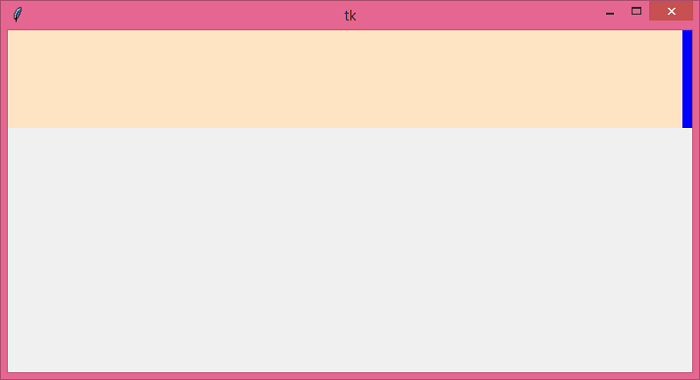
 Data Structure
Data Structure Networking
Networking RDBMS
RDBMS Operating System
Operating System Java
Java MS Excel
MS Excel iOS
iOS HTML
HTML CSS
CSS Android
Android Python
Python C Programming
C Programming C++
C++ C#
C# MongoDB
MongoDB MySQL
MySQL Javascript
Javascript PHP
PHPPhysics
Chemistry
Biology
Mathematics
English
Economics
Psychology
Social Studies
Fashion Studies
Legal Studies
- Selected Reading
- UPSC IAS Exams Notes
- Developer's Best Practices
- Questions and Answers
- Effective Resume Writing
- HR Interview Questions
- Computer Glossary
- Who is Who
What is correct: widget.rowconfigure or widget.grid_rowconfigure in Tkinter?
While building an application with Tkinter, we can use many components and widgets to extend the application. To render the widgets in the application, we use the Geometry Manager.
The geometry manager configures the widget position and size within the window. The Grid Geometry manager treats the widget to place in rows and columns.
If we want to span the widget and extend in one more cell or column, we use widget.rowconfigure() or widget.grid_rowconfigure(). It takes params such as weight and row/col value.
The widget.rowconfigure() is sometimes used in place of widget.grid_rowconfigure(). Using these methods will allow the widget to have a weight property that can be applied in rows and columns.
Example
# Import the required libraries
from tkinter import *
# Create an instance of tkinter frame or window
win=Tk()
# Set the size of the window
win.geometry("700x350")
# Add a new Frame
f1=Frame(win, background="bisque", width=10, height=100)
f2=Frame(win, background="blue", width=10, height=100)
# Add weight property to span the widget in remaining space
f1.grid(row=0, column=0, sticky="nsew")
f2.grid(row=0, column=1, sticky="nsew")
win.columnconfigure(0, weight=1)
win.rowconfigure(1, weight=0)
win.mainloop()Output
Running the above code will display some colored bands in the window. The bands can be given weight property to provide extra space in the given column.


